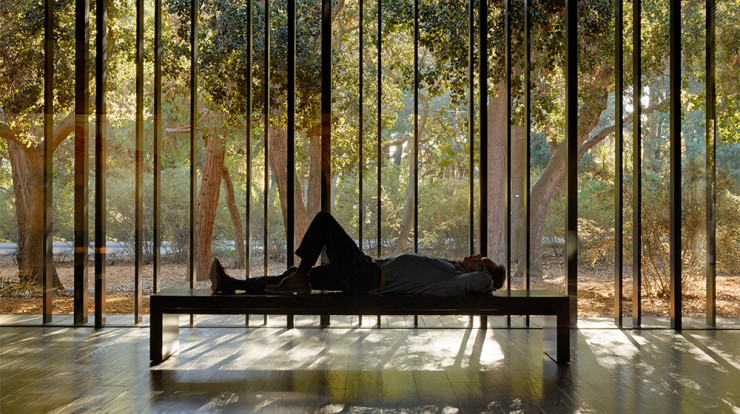What Is Biophilic Design and What Can It Do for You?

Whether or not you are familiar with the term biophilic design, it is time to find out what it can do for you. Especially today, when we are spending so much of our time in our homes due to Covid-19, it is crucial to consider incorporating biophilic design elements into our environment.
What is biophilic design, and why do you need it?
The best way to understand it is by first explaining the biophilia definition:
Biophilia is a desire or tendency to interact, associate, or commune with nature.
In modern interior design, biophilia is more than placing a plant or two in your home. It is about incorporating many design principles into your space to improve health and well-being.
Biophilic design is a connectedness that goes beyond having a fish tank or birdcage and a plant or two in a room. It is about stepping back and looking at ways to integrate the environment through sustained engagement with nature.
Why Is Biophilic Design Important Today?
Before the onset of Covid-19, life was already hectic and stressful. Now, with the home also functioning as a workplace, school, gym, and entertainment zone, it can sometimes seem as though there is no place to escape. Biophilic design is a way to improve well-being, enhance creativity, reduce stress, and expedite healing.
Think for a minute how you feel after taking a leisurely walk through a park or forest. Imagine the sound of a brook running over rocks. Breathe in and smell the earth, flowers, and trees that line the path. Nature connects us to the world around us in ways nothing else can. When you incorporate the natural world into your environment, you help promote health and well-being while reducing heart rate, blood pressure, and stress.
Biophilic design helps foster emotional attachments to our environment by satisfying the human need to affiliate with nature. It is through these attachments that we can increase our productivity, creativity, health, and performance.
What Does Biophilic Design Mean in the Home?
Biophilic design incorporates many aspects into your home, more than just bringing the outdoors in. Modern design elements may include any of the following direct and indirect experiences of nature:
- Water
- Plants
- Air
- Light
- Animals
- Natural Landscapes
- Weather
- Fire
- Images of Nature
- Earth tones or natural colors
- Natural materials
- Sounds
These are only some of the many aspects of biophilic design. With artificial light, air conditioning, synthetic textiles, and mass-produced products filling our homes, it is crucial to incorporate living things or their by-products into our interior design ideas. By-products of living things can be as simple as using bamboo flooring, rattan and wicker furnishings, stone countertops, and natural woods.
Biophilic Design Patterns and What They Mean
There are 14 patterns of biophilic design, and while we will not go into them all here, you can read about them through the link here. However, we do want to touch on some of the most important aspects here and how they benefit overall well-being:
- Presence of Water – reducing stress, lowering blood pressure and heart rate, increasing the feeling of tranquility, improving concentration and memory
- Dynamic & Diffuse Light – enhancement of circadian system functions and increasing visual comfort
- Visual Connection with Nature – lower heart rate and blood pressure, improved attentiveness, attitude, and happiness
A crucial aspect of biophilic design is that it must nurture a love of place. When incorporating naturalistic interior design into a home or office, the role of the designer is to identify the intent of the user, the needs of the space, and the long-term effects of the various components.
By utilizing the natural beauty of the world around us, the home or work environment becomes a place that fosters well-being in every sense of the world. As we look back in time, we find that humans built their structures out of the natural environments, utilizing local timber, stone, and sand. Conjure up the image of a log cabin by a babbling brook and see how that makes you feel. Now, compare that to the modern dwellings and buildings erected from steel, concrete, and other man-made substances.
How to Incorporate Biophilic Design Into Your Home By Bringing Nature Indoors
Interior designers today have more options than ever before to help bring nature indoors. Biophilic design goes much deeper even than we have explored here. Incorporating auditory, olfactory, non-rhythmic sensory, and other stimuli into the home or office can make a significant difference in your life and productivity. Now that you have an idea of how biophilia can impact your environment, it is time to learn “How to Bring Nature Indoors to Improve Your Well-Being.”
Are you ready to take your environment to the next level? HK Interiors can help. Call 954-401-8542 today for more information.


 Decisions, decisions – it seems like they are never-ending. For many people, one of the most challenging decisions they face is this: remodeling vs. relocating. Do you stay, or do you go?
Decisions, decisions – it seems like they are never-ending. For many people, one of the most challenging decisions they face is this: remodeling vs. relocating. Do you stay, or do you go?